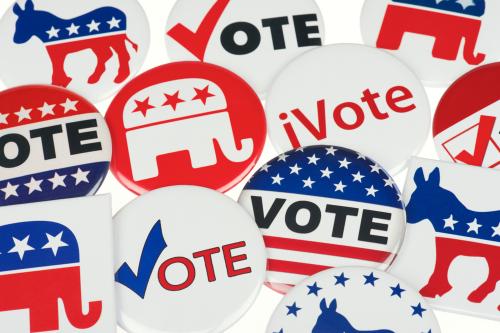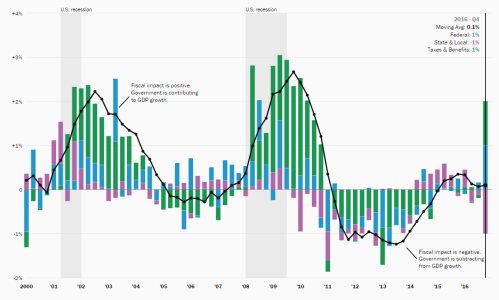High inflation in recent years has prompted reconsideration of policies for stabilizing prices. In recent weeks, for example, Vice President Kamala Harris has proposed new rent control and anti-price-gouging policies. Among the unorthodox price stabilization proposals entering the discourse in Washington is a proposal for commodity buffer stocks. Economist Isabella Weber of the University of Massachusetts at Amherst recently argued at the Peterson Institute that public buffer stocks, particularly of food, could stabilize prices, reduce macroeconomic volatility, and alleviate global hunger in our “age of overlapping emergencies.”
In this proposal, physical buffer stocks of commodities like rice, maize, wheat, and oils would be “established at strategically sensible geographic locations, managed by the FAO [Food and Agriculture Organization] or a UN body specifically created for this purpose, or by national governments who agree to release stocks according to an agreement.” Physical reserves would be complemented by “virtual reserves:” participating governments, under guidance of a coordinating body and following the advice of a global intelligence unit, would intervene in financial markets to counter perceived price manipulations by speculators, e.g. by strategic short-selling in futures markets.
The idea of a public buffer stock system, Weber notes, was much discussed after World War II, and was the source of “a rare agreement” between John Maynard Keynes and F.A. Hayek, prominent 20th century economists. However, Keynes’ and Hayek’s agreement on this topic was limited.
Hayek envisioned a global commodity reserve currency system, where a fixed basket of storable raw commodities would back the issuance and redemption of international currency. The monetary authority would passively buy and sell units of the commodity basket at a fixed price, expanding or contracting the money supply in response to market demand for liquidity.
Hayek’s system aimed to stabilize the overall price level and to provide automatic stabilization through a rule-based system. Importantly, the monetary authority would not fix the prices of individual commodities within the unit. Instead, prices of individual commodities within the basket would move up and down in response to supply and demand in their respective markets; the authority would target the price of the overall basket. In this respect, it is more like the modern inflation targeting regimes that aim to stabilize aggregate, but not relative, prices.
Weber’s proposal is closer to that of Keynes, who favored more activist, discretionary management of buffer stocks to stabilize the prices of individual commodities. This means that in a good year for wheat and a bad year for rice, prices would not signal consumers to shift their consumption towards wheat and away from rice. Nor would growing consumer demand for wheat signal producers to shift towards its production. Individual price stability would be prioritized over the efficiency that Hayek so prizes in the price system.
Weber, like Keynes, questions whether commodities markets do exhibit this efficiency. She notes that commodities prices are inherently unstable, citing the time lag between production and sales that Keynes described. This time lag was later incorporated into “cobweb” models, which show how commodity prices may oscillate without reaching equilibrium due to recurring cycles of oversupply and undersupply. Buffer stocks could alleviate cobweb dynamics by smoothing out supply over time. But Keynes believed that the private sector could not adequately provide buffer stocks of essential commodities, arguing that “the competitive system abhors the existence of stocks, with as strong a reflex as nature abhors a vacuum.” This aversion comes from the high cost and riskiness of stock holding due to storage fees, insurance, spoilage, and the opportunity cost of tying up capital.
The question is whether a national government or international agency can do better. If buffer stocks yield a negative return, or are especially risky, then ultimately, taxpayers bear the cost and the risk. Moreover, crowding out private storage could limit important future innovations in storage technology, as well as in supply chains and transportation, that might make this return more favorable over time. Weber suggests that the “virtual reserves” aspect of the plan would entail “no immediate budgetary expense,” but certainly it entails new contingent liabilities for participating governments that could be a drain on future finances. Alleviating hunger is an important goal, but might it be more effectively served through more direct and transparent fiscal programs?
Keynes also argues that public buffer stocks are necessary because of the way speculation tends to exacerbate commodity price fluctuations. Speculators, he claims, are more likely to buy into a rising market and sell into a falling market, amplifying rather than moderating price trends. Whether this is true has been the subject of debate at least since Adam Smith, in 1776, described the role of “forestallers” in the corn markets, who purchased in times of plenty, hoping to sell at a profit in the future. For Smith, these speculators played an underappreciated social role by taking on risks to make the corn supply (and prices) more uniform over time. This role, he thought, was best played by corn merchants, who possessed the requisite specialized knowledge, rather than by the government. Since then, the empirical evidence is mixed, but on balance, seems to suggest that speculative activity, particularly in futures markets, can reduce price volatility.
A global buffer stock system was not adopted in the postwar period due to struggles with international coordination and cooperation. Likewise, as Weber notes, when commodity buffer stocks returned to the international agenda in the 1970s, progress was stymied by “negotiations about who should contribute to financing stocks, within which bands prices should be stabilized, the size of the required stocks and hence the cost.” Even if an internationally coordinated system could get off the ground, competing interests could lead to major governance challenges, especially during crisis episodes.
Even national systems, some of which already exist, are not without problems of their own. For example, extensive inefficiencies and corruption have limited the role of India’s Public Distribution System (PDS) in improving food security and alleviating childhood mortality, despite various reform efforts. In the United States, the Strategic Petroleum Reserve (SPR), created in the 1970s, now has an aging infrastructure that is costly to maintain and repair. Its effectiveness at delivering oil to market in times of crisis, and of stabilizing the price, is limited. More troublingly, the SPR is frequently criticized for being used as a political tool. Politicization of SPR releases undermines the reserve’s intended purpose as a strategic, emergency resource.
If similar buffer stocks were established or expanded for other commodities, interest group politics would be a major barrier to effective price stabilization and would threaten the legitimacy of the whole system in the eyes of the public. As I describe in my book, “Shock Values: Prices and Inflation in American Democracy” (University of Chicago Press, 2024), similar dynamics eventually undermined price control efforts in World War II and the Korean War.
One final warning: Even if public buffer stocks can promote price stability in the face of short-term supply shocks, they cannot sustainably address price changes that reflect longer-term structural changes. Yet once such a system is in place, policymakers may be tempted to over-rely on it, to the neglect of more effective regulatory, fiscal, and monetary reform. Without sound monetary policy, no amount of buffer stocks can prevent inflation.
-
Acknowledgements and disclosures
The Brookings Institution is financed through the support of a diverse array of foundations, corporations, governments, individuals, as well as an endowment. A list of donors can be found in our annual reports published online here. The findings, interpretations, and conclusions in this report are solely those of its author(s) and are not influenced by any donation.
The Brookings Institution is committed to quality, independence, and impact.
We are supported by a diverse array of funders. In line with our values and policies, each Brookings publication represents the sole views of its author(s).





Commentary
Buffer stocks for price stability?
October 11, 2024